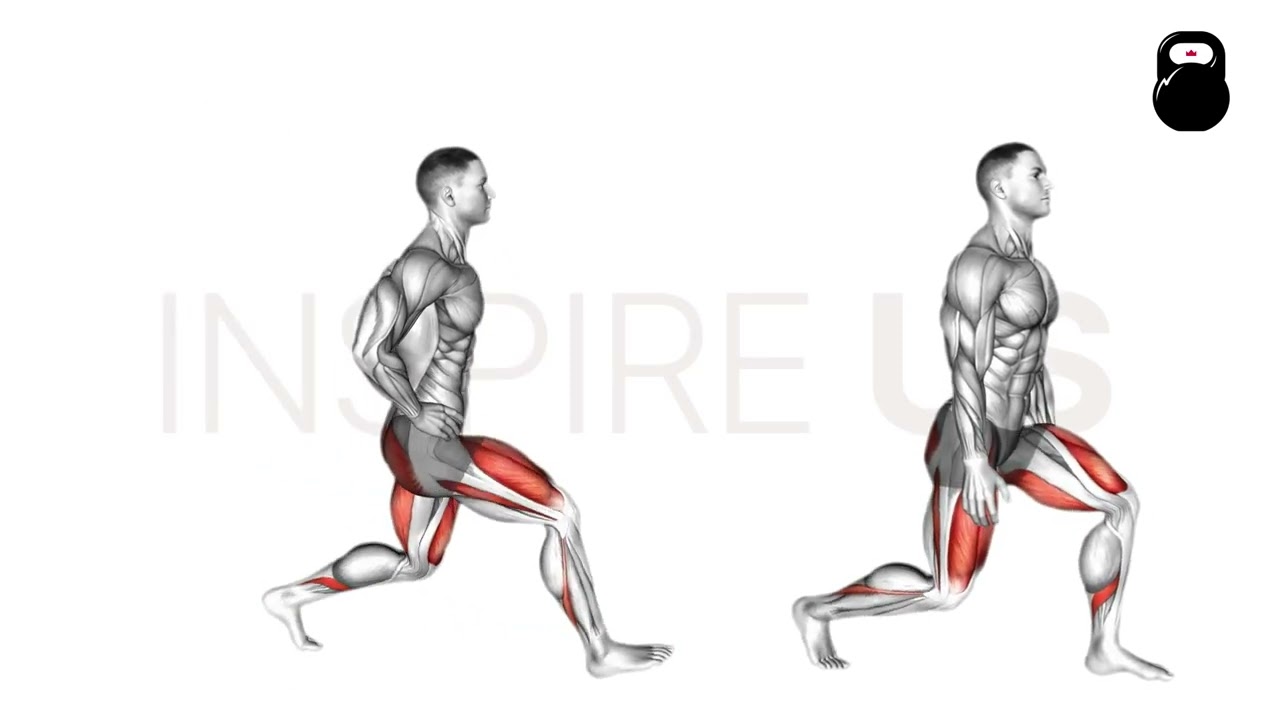Split Squat vs Lunge: The Differences Explained
Despite their similar stance, split squats and lunges are two distinctly different exercises that achieve somewhat different results.
In order to make the most of either movement, it is important to understand what makes either exercise unique.
Although we will explain in detail further in this article, the distinctions between split squats and lunges can be boiled down to minute differences in movement pattern. Split squats are entirely “static”, so to speak; In comparison, lunges are dynamic and involve more motion.
What are Split Squats?
Split squats are a multi-joint lower body exercise performed with either bodyweight or free weight resistance.
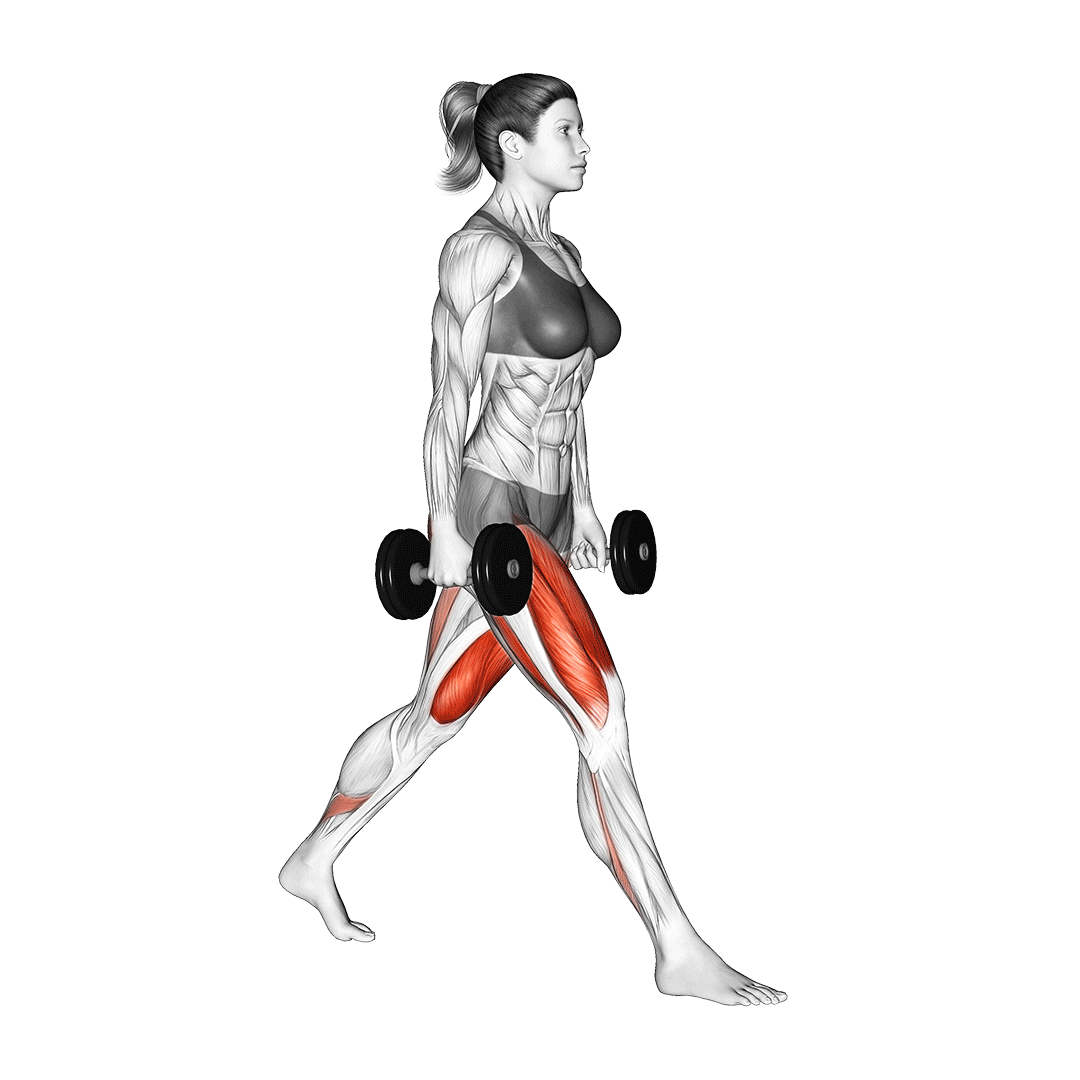
In practice, they involve the lifter adopting a unilateral stance and bending at the legs so as to train the quadriceps and other nearby muscles. Unlike lunges, split squats do not involve raising the feet off the ground, and are performed entirely in place.
Benefits of Split Squats
Split squats are considered one of the best exercises for developing the quadriceps femoris, as its uneven stance allows for greater emphasis on one leg at a time.
In addition, split squats offer a whole host of benefits beyond simple muscular development. Mobility, endurance and a greater sense of balance are just a few of the capabilities improved by split squats.
How-to Split Squat
To perform a repetition of the split squat, the lifter will grip their chosen pair of free weights at their sides and adopt the standard split squat stance. This is achieved by planting one foot several feet forwards, with the back heel raised to compensate.
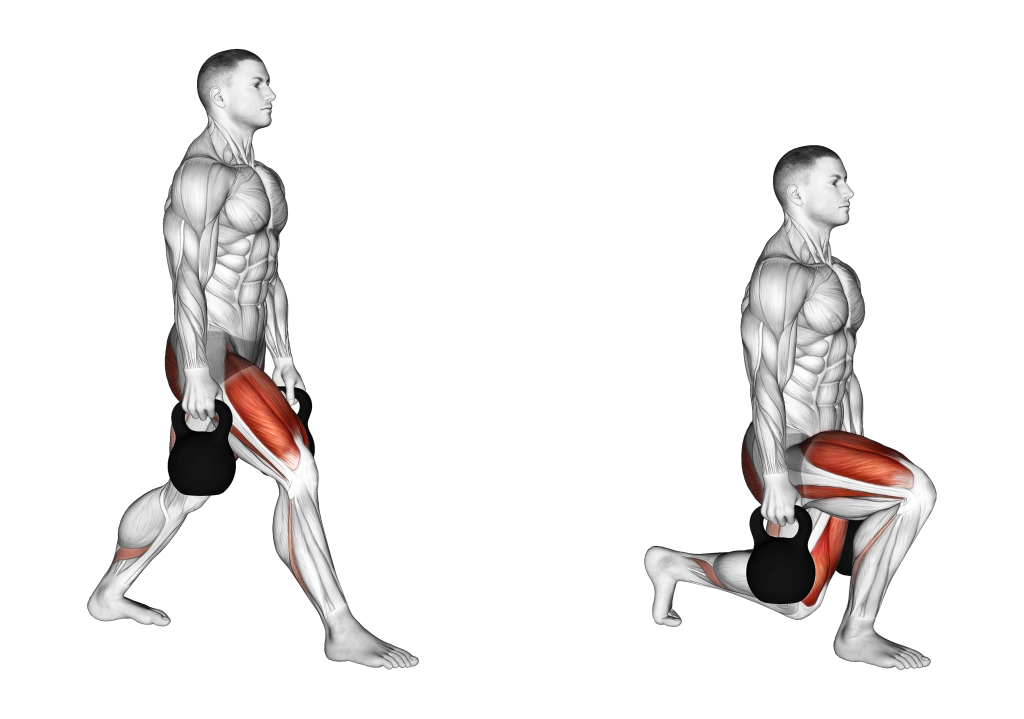
If you are performing the body weight variation of the exercise, there is no need to grip weights and your hands may hang by your sides.
Now in the correct stance, the lifter will contract their core and shift their weight towards their foreleg as they bend it at the knee.
Once the lifter has sufficiently lowered themselves to have their front thigh parallel to the ground, they will drive through their heels and raise themselves back upwards - thereby completing the repetition.
What are Lunges?
Lunges are a compound leg exercise that makes use of either bodyweight resistance or free weights.
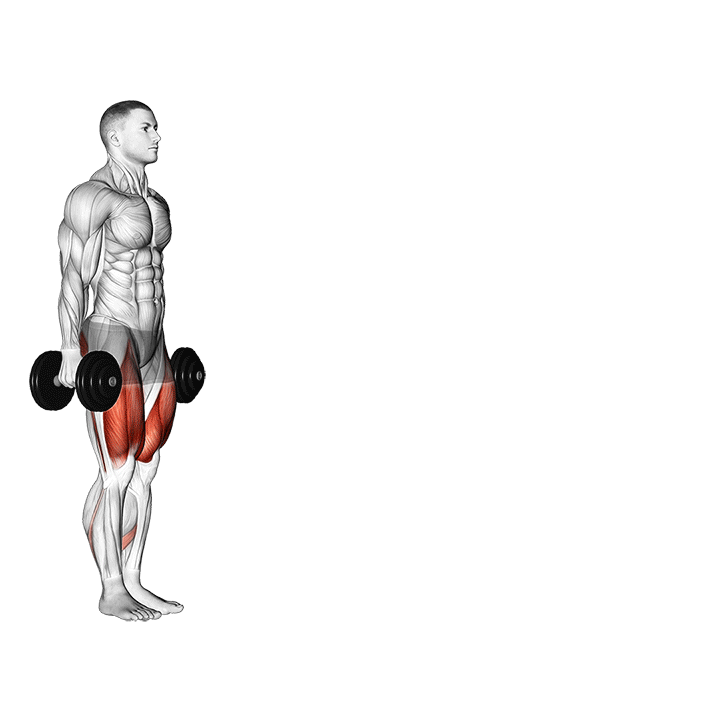
They are most often performed to train the muscles of the lower body in a dynamic manner, and are featured in a variety of different training programs.
Like split squats, lunges are a unilateral movement. However, lunges begin and end in a standing position, meaning that they require a greater amount of balance and are more dynamic in nature.
Benefits of Lunges
Lunges are considerably effective at targeting the muscles of the lower body - a benefit that is further built upon by its unilateral nature, allowing the lifter to focus more on one muscle group at a time.
In addition, lunges are also employed by athletes and weightlifters alike for developing mobility, balance and a host of other capabilities.
How-to Lunge
To perform a lunge, the lifter will stand upright with their feet set together. If performing the exercise with weights, they should be held at the sides in both hands.
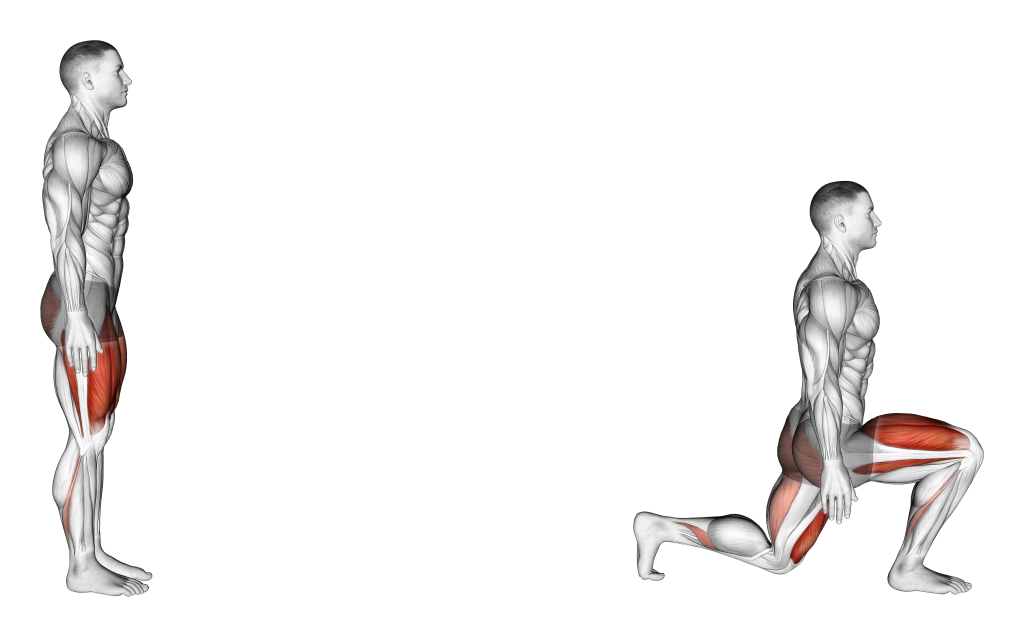
Contracting the core and aligning the back, the lifter will then take an exaggerated step forwards, bending their hindleg as they do so. The balls of the foot behind them should remain touching the floor, with the heel of the forefoot planted on the ground as well.
Now in the lunge stance, the lifter will bend both legs until the thigh of their front-facing leg is parallel to the floor.
From this point, they will push through their heels and rise back to an upright position.
The repetition is considered to be complete once they have brought their feet back together.
Split Squat vs Lunge - Muscles Worked
Both the split squat and lunge target much the same muscle groups - that being the quadriceps, glutes and hamstrings. However, where the two differ is in terms of intensity.
While both exercises will activate the same muscles, they do not do so in equal measure. This is due to their difference in movement pattern.
Quadriceps Emphasis
In terms of pure intensity of recruitment, the lunge targets the quadriceps to a greater range - simply because it involves a more dynamic and wider range of motion in comparison to the split squat.
Of course, the stationary nature of the split squat also means that a greater capacity for volume and specificity is present - making it better for isolating the quadriceps.
As such, if picking between the two exercises purely from a bodyweight standpoint, the lunge is the better choice. Alternatively, if additional resistance is present, the split squat may be better for targeting the quadriceps with high volume.
Secondary and Stabilizer Muscle Recruitment
Apart from their difference in quadriceps emphasis, the lunge also targets the core, calves, hip adductors and other secondary muscles more than the split squat. Again, this is because of its wider and more dynamic range of motion.
Split Squat vs Lunge - Stance and Technique
Apart from the specific muscular emphasis of either exercise, the split squat and lunge also differ in terms of their stance and technique used.
Differences in Stance
The most obvious difference in stance between the split squat and lunge is at the start of the exercise. Split squats begin with the lifter already in the staggered stance, and requires that they only bend their legs with each repetition.
Conversely, the lunge both starts and ends with the lifter in a standing position. This requires them to lunge forwards with each repetition, creating a different movement pattern.
Differences in Movement and Range of Motion
Differences in stance notwithstanding, the split squat and lunge also involve slightly different techniques as well.
The lunge will involve the lifter taking a large enough step forwards to bend both legs to an equal degree, and as such will cause both legs to be recruited in a similar manner.
This is not so much the case with the split squat, which involves less of a bend with the hindleg, and as such will emphasize the muscles of the front-facing leg to a greater extent.
Split Squat vs Lunge - Loading Potential and Complexity
The lunge and split squat differ in terms of how much weight can reasonably be used as a working load - that is, if you are performing the weighted variation at all.
Loading capacity aside, even in cases where the split squat or lunge are solely unweighted, their level of difficulty differs. This can affect which exercise is more suitable for a novice or previously injured individual.
Capacity for Loading (Free Weights)
In terms of working weight capacity, it is the split squat that will allow for greater weight and volume to be programmed. Such loading is a result of the fact that the lunge is more difficult to balance with each repetition, and the fact that the split squat features a more static stance.
Both aspects of the split squat create a more efficient movement pattern, equating to more muscular energy being diverted towards force output.
Complexity of Form
In truth, both the split squat and lunge are considered to be novice level exercises in their own rights.
However, erring on the side of caution, we advise novices to first familiarize themselves with the split squat. The split squat requires considerably less balance to perform safely, and replicates the movements of a lunge closely enough to build some level of carryover between them.
Athletes or individuals with some training experience under their belt can benefit from the more complex and dynamic lunge - so long as they are confident they have the form and balance down pat.
Mobility, Stability and Strength Requirements
In terms of mobility and stability requirements, the lunge is more demanding than the split squat. This makes it somewhat more advanced in difficulty, but is nonetheless still accessible to healthy novices.
When speaking of strength requirements, however, the split squat will place much of the lifter’s weight on only a single leg at a time. This means greater quadriceps strength is needed to perform it, but individuals who are quadriceps dominant may find the lunge to be the more demanding exercise.
Split Squat vs Lunge - Use Cases and Athletic Carryover
With all these differences between the split squat and the lunge, it becomes obvious that they each serve a respective function within a training program.
Which Exercise is Better for Hypertrophy?
Because the split squat is static and utilizes the smaller muscles to a lesser extent, it is the superior choice for inducing hypertrophy in the quadriceps and other leg muscle groups.
This is especially true when comparing the weighted variations of the lunge and split squat, where the greater loading and volume capacity of the split squat can allow for significant programming advantages.
Which Exercise is Better for Functional Strength and Power?
In terms of building strength and power in the lower body, the lunge may be the more appropriate choice over the split squat. Not only is the lunge more similar to natural movement patterns performed in daily activity, but it is also more comprehensive and dynamic in nature.
These aspects are needed in functional training and for building explosiveness in the lower body - hence the fact that the lunge is better for either purposes.
Which Exercise is Better for Mobility, Endurance or Athletic Skill Development?
Be it building lower body mobility, muscular endurance or developing other skills that may be needed in athletic activity - the lunge is the better exercise.
Outside of a few highly specific scenarios, the lunge is both more functional and more demanding on the muscles. This makes it better for building athletic skills or endurance.
In terms of mobility, lunges are once again a better choice, as they feature a wider range of motion and are not static in the same manner as split squats.
Frequently Asked Questions (FAQ)
Are Split Squats and Bulgarian Lunges the Same?
Yes - the term “Bulgarian lunge” refers to a split squat. Specifically, it is an alternate name used for the Bulgarian split squat, of which is a variation of the standard split squat exercise.
What is the Difference Between a Regular Squat and a Split Squat?
The split squat is performed in a unilateral and staggered stance. In comparison, the regular squat is bilateral and performed in a traditional squatting stance.
Are Lunges and Split Squats Enough for Glutes?
In actuality, neither lunges nor split squats are as glute-focused as exercises like the regular squat or glute bridge. Although they are indeed excellent lower body exercises, you may see more benefit from performing an exercise geared more towards the posterior chain muscles.
Split Squats or Lunges, Which is Better?
Whether the split squat or lunge is a better exercise depends on your specific training needs.
Identify any weak muscles in your lower body, assess what sort of goals you wish to reach and whether your chosen exercise fits into your program. If all these are answered by one of either exercises, then you’ve found the better one.
Alternatively, it is entirely possible to perform both exercises - especially as part of an athletic training circuit. To do so, prioritize lunges as they are more dynamic, but don’t forget to follow up with split squats as well.
References
1. Marchetti PH, Guiselini MA, da Silva JJ, Tucker R, Behm DG, Brown LE. Balance and Lower Limb Muscle Activation between In-Line and Traditional Lunge Exercises. J Hum Kinet. 2018 Jun 13;62:15-22. doi: 10.1515/hukin-2017-0174. PMID: 29922373; PMCID: PMC6006536.
2 . Bezerra ES, Diefenthaeler F, Nunes JP, Sakugawa RL, Heberle I, Moura BM, Moro ARP, Marcolin G, Paoli A. Influence of Trunk Position during Three Lunge Exercises on Muscular Activation in Trained Women. Int J Exerc Sci. 2021 Apr 1;14(1):202-210. PMID: 34055138; PMCID: PMC8136561.

